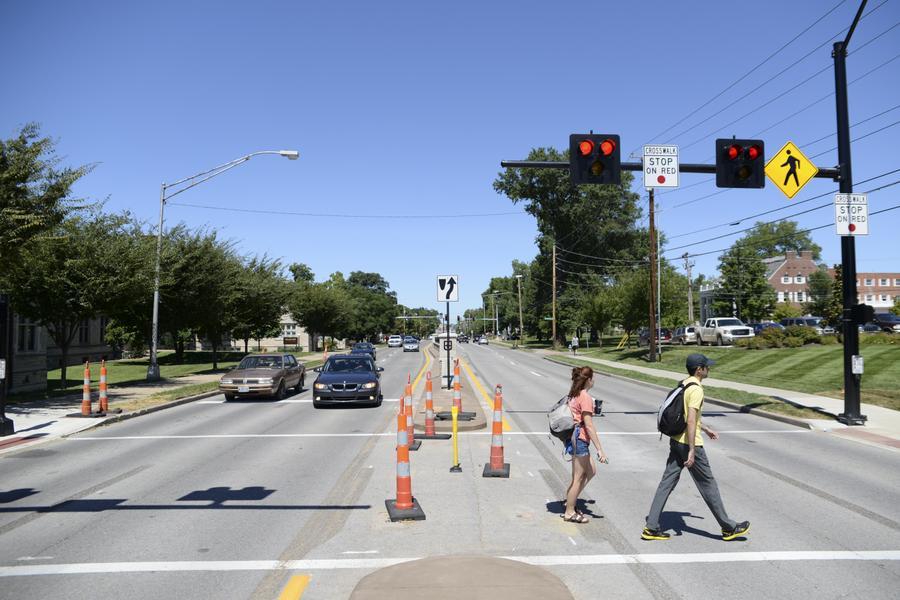
As the [College Avenue Safety Enhancement project](https://www.themaneater.com/stories/2014/9/23/making-city-streets-safer/) comes to a close, Columbia’s Pedestrian Safety Task Force is shifting its focus to an innovative crosswalk arrangement.
After weeks of one-lane traffic and prohibiting pedestrians from crossing College Ave. in the CASE construction area, the project was scheduled to end Aug. 21.
CASE is the first of many steps Columbia is taking toward creating a safer environment for drivers and pedestrians. After [three separate pedestrian-involved accidents](https://www.themaneater.com/stories/2015/2/4/after-three-accidents-one-day-mus-pedestrian-safet/) on Jan. 22 of last year, one resulting in the death of 24-year-old internal student Kui Zou, improving pedestrian safety became a goal in Columbia.
In response to the increase in pedestrian accidents, Mayor Bob McDavid created a 15-member [Pedestrian Safety Task Force](https://www.themaneater.com/stories/2015/6/3/pedestrian-safety-task-force-launched/) to make the roads safer for both pedestrians and drivers.
Task force Co-Chairman and Fourth Ward Councilman Ian Thomas said the task force is looking at three areas of pedestrian safety throughout the city: engineering, education and enforcement.
A major idea presented by the task force was a “pedestrian scramble,” which was discussed and unanimously approved by the City Council on Aug. 3.
A pedestrian scramble is a crosswalk consisting of signals with three phases for cars and pedestrians: one phase allows cars to move north and south with no pedestrian movement, another phase allows cars to move east and west with no pedestrian movement, and a final phase stops all vehicle traffic to allow pedestrians to cross the intersection in any direction. It will be built at the Ninth and Elm streets intersection, and construction will start and finish in 2016.
Fifth Ward Councilwoman Laura Nauser said she has concerns about the new crosswalk.
“It will be a challenge because we are a society who is always in a hurry, and those who are standing there or in their vehicles and have to wait those extra few seconds until it’s their turn will certainly be an adjustment,” Nauser said. “So if it’s not going to work, that is where it will fail.”
Other council members, including Thomas, see the scramble as an obvious fix.
“(The pedestrian scramble walk) is going to improve pedestrian safety quite substantially because it is going to remove the conflict between turning vehicles and pedestrians,” Thomas said.
The Pedestrian Safety Task Force is expanding its education efforts by informing pedestrians of when and where to walk, and of the dangers of texting while on the road for both pedestrians and drivers. To further prevent pedestrian injuries, the task force recommends being watchful of road conditions, including wearing brighter colors at night, following traffic rules, and not texting on the road.
Third Ward Councilman Karl Skala said that in addition to the new “pedestrian scramble” crosswalk, keeping the streets and sidewalks well-maintained is a high priority in order to ensure safety.
“I think we’re becoming a much more sophisticated city,” Skala said.